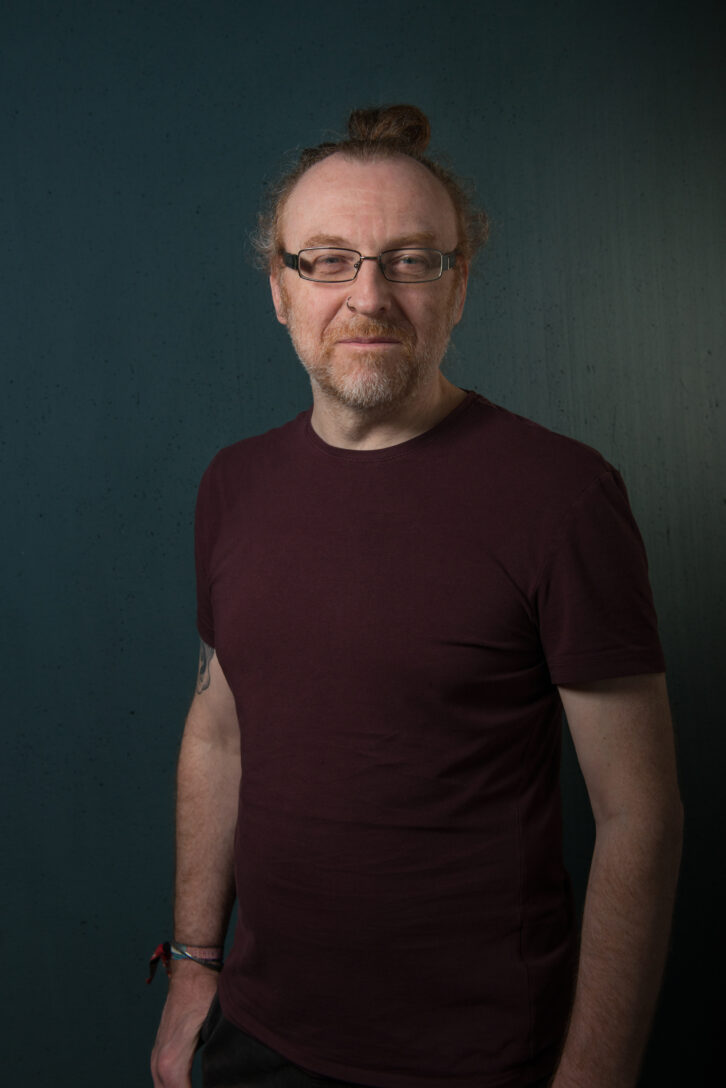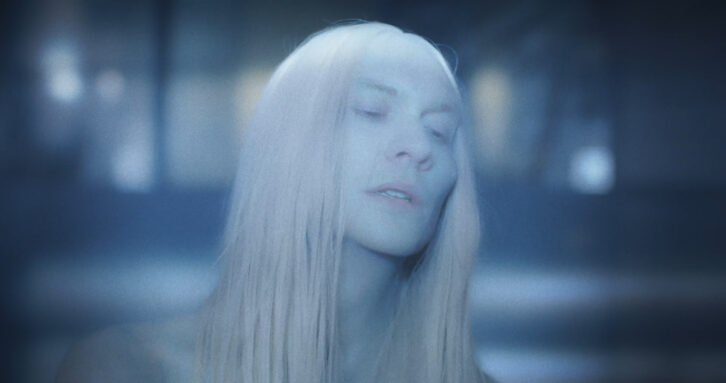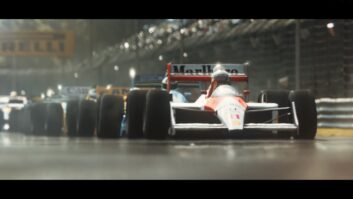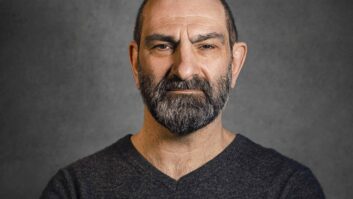Ahead of its theatrical release in UK and Irish cinemas, Paul Duane’s new horror movie, All You Need is Death has been praised by critics. Simon Wilkinson, head of VFX at 1185 Films, talked to TVBEurope about creating the unsettling effects that are set to scare horror fans as the film opens to audiences.
How involved were the VFX team in pre-production and on-set filming?
Pual Duane’s vision as director of All You Need is Death was to create a lot of the effects using prosthetics. However, although they work well, practical effects still need some embellishment. There were many discussions in pre-production as to how the project would work. The relatively low budget nature of the shoot meant that we were not always able to be on set as VFX supervisors, unfortunately. There was one practical effect that became particularly challenging – the team were excellent but the shot was difficult under the budgeting and time constraints, so we had to use VFX to fix it. The team spent many hours trying new techniques within a confined timeframe to achieve the best results.
Where did you draw inspiration for the VFX from?
For the creatures/Smudgies, Paul Duane showed us references from the Japanese horror film Pulse, by Kiyoshi Kurosawa. In Pulse, there’s a scene where a shadow of a girl appears to walk past the screen and it looks very creepy. Paul was very keen to use this scene in particular as an inspiration. We wanted to make the most of the shadowy creature itself and add some detail, which is why we chose to adopt CGI and create something with depth.

We also liked the Dr Manhattan disintegration scene from the film Watchman and tried a similar effect on the creature morph, later on in All You Need is Death. I think it was the idea of the guy disintegrating that inspired us, but we wanted our actor to both disintegrate and then morph into the creature afterwards.
What was the main purpose of using VFX?
The VFX were used to enhance the folk horror narrative without being too obvious for the audience. The best example is where we removed the thong on the actor who played the creature. The creature was non-binary and Paul Duane created the creature with actor / model, Benedict Stewardson, in mind. They gave an exceptional performance and played a really essential role in the film. The thinking around extracting the thong was to remove the gender, making the creature look naked, so we had to get rid of the defining lines – this was quite a challenge.
The blood effects were used to enhance the horror. The bottle which becomes lodged into Rita’s face (played by actor Olwen Fouéré) was prosthetic and looked plastic, so it was re-textured to look like glass. The chisel blade in a scene at the end of the film was CGI and motion tracked to the handle, because obviously it wasn’t a good idea to let two actors try and violently stab each other with a real blade!
How many shots did you create for the film?
20 shots were created.
How big was the VFX team on the project?
The VFX team was quite small, with three people overall.
Talk us through the workflow.
Each shot required a different approach but the workflow was consistent throughout. R&D is a very important if not an essential part of our process. Once we have agreed the concept we can complete the work. The Smudgies, which were the shadowy creatures which had haunted the character Breezeblock all his life, started life as a CGI Nosferatu-type creature, and this had quite a lot of depth. It was transparent and had a skeletal structure inside, almost like an X-ray. The CGI was created in Lightwave and Blender. It was rigged and then a walk-and-crawl motion capture was applied to it. To make it look shadowy we took it into After Effects and applied some smoky filters to it, softened it off and made it look darker.
 Paul Duane was impressed by that development but wanted it simplifying further, so we removed the transparent detail. When viewed as a solid shadow it didn’t look right. It still looked too defined, too much like Nosferatu. So we decided to stick with the same method (because we liked the movement that we got from the motion capture) and used a 3D model of a monk instead. It had a more human shape to it but the robe made it look more solid, less defined, and also it added that extra dimension to the movement. This worked a treat and as a result the Smudgies looked more creepy and it was difficult to identify what they were – this is exactly what the director had in mind.
Paul Duane was impressed by that development but wanted it simplifying further, so we removed the transparent detail. When viewed as a solid shadow it didn’t look right. It still looked too defined, too much like Nosferatu. So we decided to stick with the same method (because we liked the movement that we got from the motion capture) and used a 3D model of a monk instead. It had a more human shape to it but the robe made it look more solid, less defined, and also it added that extra dimension to the movement. This worked a treat and as a result the Smudgies looked more creepy and it was difficult to identify what they were – this is exactly what the director had in mind.
When speaking to Eye for Film publication, Paul Duane noted “When you’re on a limited budget, you’ve got to think of ways to creep people out without showing them too much. The more you try to show, the less effective it can be. The VFX are very sophisticated. There are actually creatures in there. I kept saying ‘Show less, show less! Take out the detail.’ You can see the shape of it. You know there’s sort of a thing inside there, which is why all the VFX work paid off.”
What was the biggest challenge of working on All You Need is Death?
The biggest challenge was the creature morph, at the end of the movie. Originally this was going to be a practical effect with minimal VFX. The whole scene was made up of two different shots with two actors. Sometimes things just don’t work out the way you’d like and the practical effect became “lets fix it in post.”
One actor had their legs open, the other actor had their legs closed. The first shot had a camera move in, and the second shot was locked off, so there was a lot of roto and cleanup work to do before we even got started with the morph effect. Half the room had to be re-painted because a clean plate hadn’t been filmed and a new camera move had to be created. Once all the prep work had been done we had the challenge of doing the morph effect which involved a lot of R&D, trying different methods, before we settled on the effect that can be seen in the film. The grade definitely helped this shot. It was challenging, to say the least.
What are you most proud of achieving?
We felt a real responsibility to ensure the VFX matched the dark and ominous tone of the film. I think we achieved that and I hope those who watch the film will be impressed. If I had to single out elements I’m most proud of, I would say the Smudgies or shadowy creatures. I just love the motion. I knew that using CGI models would allow for better movement than trying to morph 2D shapes, and as soon as I saw the brief I had an idea in my head straight away how to achieve this, the tricky part was getting the look and feel.
Once the renders were made to look like shadows we knew we were going down the right path. The movement really helped to make them look creepy but it just needed reining in a little. Those who have seen the film already have commented on the Smudgies and they were really surprised that we went down the CGI route to achieve this effect. So it’s satisfying to hear how well they come across, ultimately.
What’s been the reaction of audiences who have seen the film (and the VFX) so far?
The film has received some fantastic reviews in a wide variety of sources, from horror fan sites, national newspapers and movie podcasts. The UK’s leading film critic, Mark Kermode, reviewed the film on Kermode and Mayo’s Take podcast and said: “It’s really, deliciously, deliriously kind of unhinged, properly unhinged. It’s got a really genuine atmosphere of dread. It is really, really, powerful. I thought that it was completely insane – in a good way. It is absolutely nuts and dreadful in as much as it is full of dread – and then some.”
Of course, the reviews that matter the most are the audiences who will go and see it. I can’t wait to hear their reaction – they’re in for a great ride.
All You Need is Death is released on Friday 19 April in the UK and Ireland






